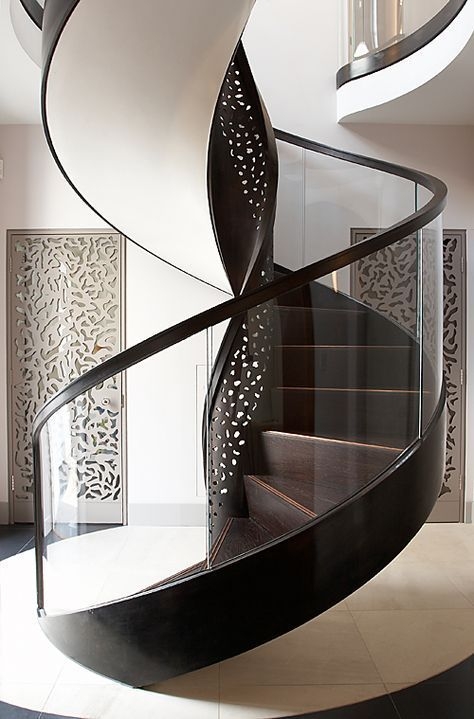There is something so romantic about staircases. They invoke an image of a knight rushing up the spiral stairs to the top of the tower to save his damsel in distress.
Spirals have been used for centuries, mostly because they could fit in tight spaces and could be built of almost any material, to great heights. In ancient castles, they were built in towers, of stone, in a clockwise direction, so that they could be defended easier – an attacking swordsmen would have to fight with his right hand in the narrow part of the stairs.
Spiral staircases are designed around a central pole, with railing on one side only. The stairs are narrower close to the pole and wider on the opposite end, making them difficult to use for people with disabilities. Their design is meant for the effective use of space, and not for comfort. But, the spiral design allow for some very interesting designs, and there are many significant staircases in the history of architecture.
One of the most famous stories about spiral staircases comes from Santa Fe, New Mexico, from the Loretta Chapel, where original builders forgot to build any kind of stairs to the choir loft. As an answer to the nuns’ prayer, one day a shabby strangers came and offered his help. He proceeded to build beautiful, twenty feet high spiral stairs in only three months, with no nails at all, with two full revolutions around the central pole. The stairs are still one of the main attractions for tourists visiting this lovely old church.
Spiral stairs can be used indoors and outdoors, of any material that fits the architecture of the home. Outdoor spiral staircases are usually made of metal or wood, in order to reach upper floor, roof terrace or a balcony. Indoor spiral staircases can have many uses, but the main goal is usually to use small or narrow space, to build stairs to reach upper floors.
With some imagination, spiral staircases can be a real asset to the home design. They can be built with impressive, carved and decorative railing, to serve not only as stairs, but as a piece of art. This is particularly true for iron spiral staircases, that can be built to fit any interior decorating scheme. Spiral staircases are very popular in remodelling of old industrial buildings into living spaces like lofts, which are often of great heights and allow for different levels.
A spiral stair case in this case can be a focal point of the whole home. Classical homes can also benefit from the intriguing design of a spiral staircase, particularly in libraries and studies. The railings can combine materials like fine woods, glass, rope, carpeting and others, only home owner’s imagination is the limit. But, in general, spiral staircases are called into use when the space is limited and can be of great help to reach seldom used spaces like attics, which can be then converted into an extra room for a teenager, or a studio for an empty-nester.


















































